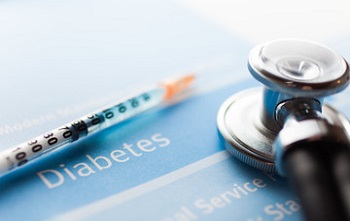
Diabetes Medications: Part 2
Diabetes continues to reach epidemic levels throughout the world. As of 2020, approximately 34.2 million Americans have been diagnosed with diabetes, with type 2 diabetes accounting for 95% of those cases. Worldwide, there are approximately 463 million adults living with diabetes, and that number is expected to rise to 700 million by the year 2045. Diabetes reportedly causes 70 billion dollars in health expenditures.
The goal of this course is to educate healthcare providers on various diabetic prescription medications. Such education will empower them with the skills necessary for effective patient education, and early identification of possible side effects.
According to the Centers for Disease Control and Prevention, 88.2% of adults with diagnosed diabetes in the United States, use either oral medications, insulin, or a combination of both to treat and control diabetes. Furthermore, an adult with diagnosed diabetes in the United States reports using an average of 5.9 different prescription medications. Frontline healthcare providers require ongoing diabetes management education to ensure patient safety and well-being. This CE program offers an overview of various treatment options.
Questions? Check out our FAQs page and How Online IV Certification Works!
Objectives
Upon completion of this course the participant will be able to:
- Discuss different types/classes of oral hypoglycemic medications.
- Discuss different types of diabetes treatment (noninsulin) injectable medications.
- Verbalize symptoms of and treatment for hypoglycemia.
- Identify recommendations for hypoglycemia treatment with glucagon injectable.
- Discuss the timing of administration of insulins and noninsulin injectables.
- Describe the effect of amylin and incretin mimetics in regulating blood glucose levels.
- Verbalize understanding of the uses for continuous glucose monitoring.
Curriculum
Chapter 1: Oral Medications
- Meglitinides
- Alpha-glucosidase inhibitors
- Thiazolidinediones
- Sulfonylureas
- Biguanides
- Dipeptidy Peptidase-4 (DPP-4) inhibitors
- SGLT 2 inhibitors
Chapter 2: Injectable Medications (Non-insulins)
- Amylin analog: Symlin (Pramlintide)
- Incretin mimetics/ GLP-1 Receptor Agonists
Chapter 3: Injectable Medications (Insulins)
- Rapid acting insulin
- Short acting insulin
- Intermediate acting insulin
- Fast acting insulin
Chapter 4: Additional Learning
- Continuous Glucose Monitoring
- Hypoglycemia treatment guidelines, Rule of 15 parameters
- Glucagon injectable
- Case Study
Chapter 5: References
- California Bill 241
- Implicit Bias in Healthcare
- What is Implicit Bias?
- Implications of Implicit Bias in Healthcare
- How to Reduce Implicit Bias
Price: $18.00
Contact Hours: 1.5

Course Author

Maureen Sullivan-Tevault
Maureen graduated nursing school in 1981 and has spent her years in the Emergency and Trauma field, including nursing positions as the Emergency Department Manager, Director of Staff Education, Trauma Coordinator, Cardiology Nurse Navigator, and Stroke Program Manager.
Read Full BioCourse Accreditation
See our Accreditation Statements page to view our accreditation information.